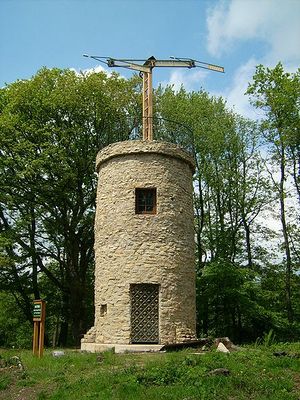Claude Chappe
- Birthdate
- 1763
- Birthplace
- Brulon, France
- Death date
- 1805
- Fields of study
- Communications
Biography
Claude Chappe was a French engineer who made the first practical execution of the long held ideas of and experimentations with optical telegraphy. He made the first and largest practical semaphore line in 1792 which remained in operation for 61 years. Chappe coined the word ‘semaphore’ in 1801 and also the word ‘telegraph’.
Claude Chappe d’Auteroche was born in Brulon, France, in 1763 and was the grandson of a French baron. He went to the Lycee Pierre Cornielle in Rouen and was trained to be a clergyman but lost his sinecure during the French Revolution. During this time, in the early 1790s, especially when the counter-revolution was going on, France needed a reliable and efficient communication system to thwart the surrounding neighboring forces of Britain, Prussia, Austria and Spain. In the summer of 1790, Chappe and his four unemployed brothers set about to devise a communication system to transmit and receive information in the shortest time possible. One of his brothers was a member of the Legislative Assembly and at his insistence the Assembly supported Claude’s proposal to build a relay line with 15 stations between France and Lille, a distance of 120 miles. The design by the Chappe brothers had two arms, each with seven positions and a cross arm with four positions and together they permitted a 196 combination code. The relay towers were placed 10 to 20 miles apart. Each tower had a telescope pointing both upward and downward. In 1792, the first message was sent between Paris and Lille. The semaphore line was used to relay messages during the war between France and Austria. Soon 50 stations were built between Paris and Strasbourg. The semaphore lines spread widely in Europe and the network was used not only for military purposes but also for relaying commercial messages.
In 1805, a melancholic Claude Chappe committed suicide amidst accusations of plagiarism. The semaphore lines continued to be in operation till 1852 when they fell into disuse with the emergence of the new system of electric telegraph lines. The semaphore lines were mechanical telegraph lines and the first successful telecommunications system in the industrial age.
References
The Telegraph of Claude Chappe: An Optical Telecommunication Network for the XVIIIth Century, by Prof. J.M. Dilhac
